When was the last time you saw a chair of animal horns or a Buddhist temple depicting hell’s tortures? If you’re the sort that like to get off the beaten path in your travels, however, you’ve landed on the right page. Rent a scooter or car and make your way to some of the best places around the region.
In Chiang Mai Province
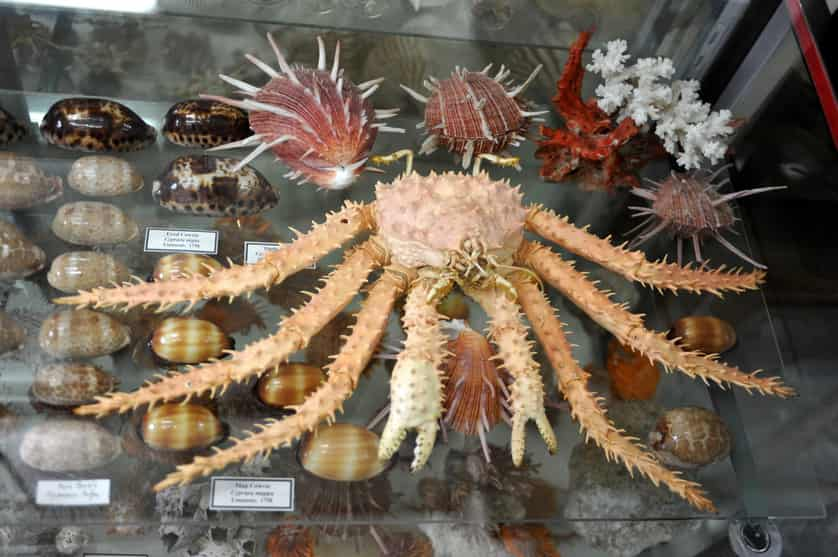
Museum of World Insects and Natural Wonders
A short walk from Nimmanhaemin is one of the city’s most unusual museums. The two-floor museum covers plenty of ground related to insects, but keep your eyes out for the wishing bell and a sign encouraging you not to squish God’s creations. The first floor offers more on the founder, an entomologist who has discovered 13 species, and some larger-than-life models of creepy crawlies.
Head up to the second floor for over 450 species of Thai mosquitoes around to go with the larger collection of over 315 genera. Look around for the huge crustacean – specifically, a Map Cowrie (Cypraea mappa), discovered by Carl Linnaeus in 1758. Also around, and seemingly for no reason, is a collection of rare or error coins – take a closer look if you need a break from insects.
72 Sri Mangkalajarn (AKA Nimmanhaemin soi 13), off of Huay Kaew Road
(GPS: 18.796125,98.970656)
www.thailandinsect.com
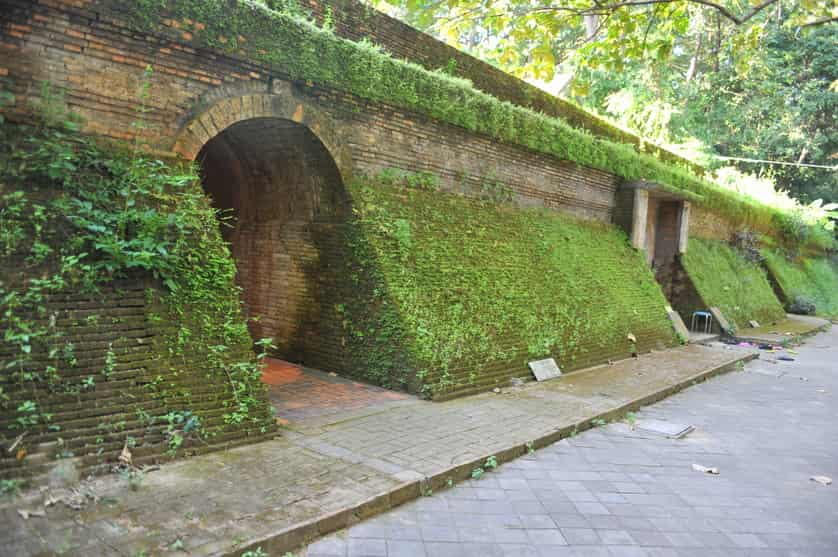
Wat Umong – the Chiang Mai temple with tunnels
Built in 1297 by the Lanna King Manglai, the fifteen-acre temple feels more like a romantic forest park than a sacred temple. Why the tunnels, you ask? While it’s not explained on-site, the story goes that Thera Jan, a famous but mentally deranged monk, would wander away from the temple for days. The king had the tunnels built into the side of Doi Suthep (Mt. Suthep) and had bush scenes painted on their inside. That way, the monk could be kept on the temple grounds. Another legend holds that the monk used a tunnel to meditate in peace. As King Manglai’s city of Chiang Mai grew larger, however, the noise grew more wearisome for the monk. Trying to placate the monk, the king ordered tunnels dug and lined with brick walls to accommodate the monk.
Head here to practice Anapanasati meditation, which focuses on controlling one’s breathing. The catfish in the pond and ducks nearby are always happy to see some bread (available for some pocket change), and some of the ‘talking trees’ feature proverbs in English.
135 Moo 10, Tambon Suthep
(GPS: 18.783329, 98.951194)
www.watumong.org
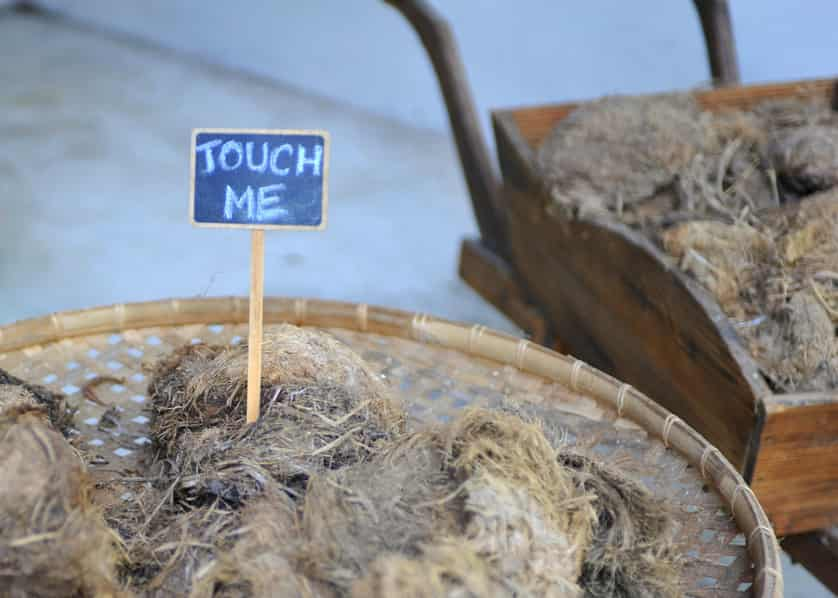
The Elephant Poo Paper Park
Go ahead, get your puns out of the way early on – after paying the admission fee, take in the souvenir shop where the best puns have already made it onto t-shirts and paper products. This paper really is made from elephant poo, and you’ll see the entire process as you walk through the park. Dare yourself to touch the dried elephant poo (it doesn’t stink, and actually looks more like a dirt clump). Excellent English signage and some genuinely unique souvenirs make this an environmentally-friendly and kid-friendly choice.
87 Moo 10 T. Maeram
(GPS: 18.925438,98.931616)
www.poopoopaperpark.com

Wat Mae Keat Noi – the creepiest, scariest hell temple around
This one’s most definitely not for the kids. Hell temples are where Buddhists can go to see the scriptures brought to life. While some hell temples throughout the country also focus on enlightenment, this is a gruesome trip into the depths of naraka. Complete with graphic representations of punishments that await alcoholics, the unfaithful, the thieves, and so on, it’s a clear warning of what may await you in the next life if you’re bad in this one.
Along route 1001, Tambon Pa Phai, Ban Mae Kaet, Chang Wat
(GPS: 18.877943,99.03681)
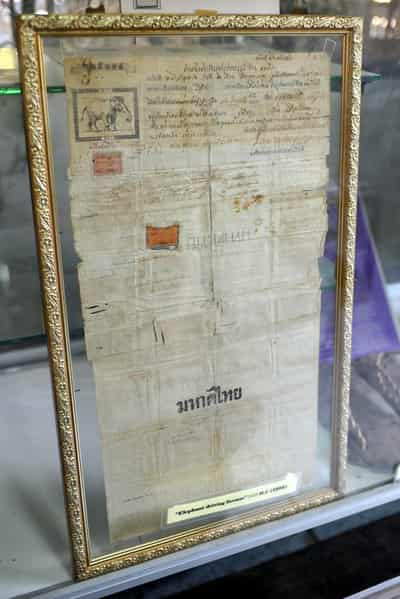
Wat Rong Meng – ever seen an elephant drivers license?
Claiming over 20,000 artifacts, the Wat Rong Meng museum was started in 1984 by Phra Khru Kowit Dhammasobhon (Sriphong Kovido) with his collection of artifacts. If you’re on a tight schedule, head to Wat Ket in Chiang Mai for another temple’s collection of artifacts. Beyond the large frame holding an elephant drivers license from 1916, look for the necklace made of donkey teeth and a picture of the very first Miss Thailand.
Tambon Nong Yaeng, Amphoe San Sai
(GPS: 18.882706,99.100197)

Baan Jang Nak – the workshop and museum of wooden carved elephants
Started 40 years ago, Baan Jang Nak is workshop-cum-museum full of exquisitely carved is legitimate workspace first and space for beloved elephants second. Carved from khi lek wood, this wood is some of the hardest wood nature creates – hard enough that the sculptors have created their own tools to work with it. These things aren’t cheap – and they don’t come together overnight. Some of the larger sculptures take up to 4 years to make, and can cost a million baht (over $30,000 USD). Smaller ones are for sale here (starting around 2,000 baht), while a selection can also be found at two stores in Chiang Mai – one’s on Ratchadamnoen rd, and the other on Nimmanhaemin soi 1.
56/1 Moo 2 Buakkang, Sankampaeng
(GPS: 18.722491,99.116204)
Elsewhere in Northern Thailand
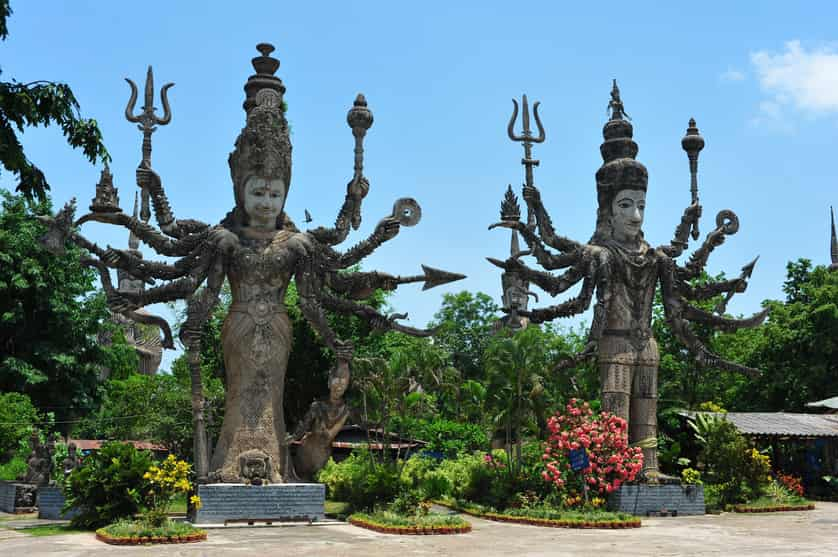
Sala Kaeoku – the Nong Khai ‘temple’ with bizarre statues
If you’ve ever felt like the lesser-known sibling, this place is dedicated to you. Much like the Xieng Khuan Buddhist Park across the river in Laos, the story begins with our man Luang Pu, a priest / shaman aiming to integrate Hinduism and Buddhism into a single religion. That park came first, and construction of the bizarre concrete sculptures began in 1958. After Lao’s revolution in 1975, he fled across the border to Thailand’s border town of Nong Khai and began a second park in 1978. Over the next 20 years, he built or supervised the statues you’ll see today; as he got older, he was supposedly brought in via wheelbarrow to continue supervising. Some are 25 meters tall, but all aim to share the myths and legends behind Hindu and Buddhist beliefs.
An unnamed road off of route 212, Tambon Wat That, Amphoe Mueang Nong Khai, Chang Wat, Nong Khai 43000
(GPS: 17.887103, 102.781401)

Black House (Baan Dam) – home to the most skulls and horns in northern Thailand
The Black House is probably the largest collection of animal remains made into furniture in the world. Home to the famous Thai artist Thawan Duchanee, look for elephant skeletons, wholly impractical chairs with skulls right behind your butt, and a building that looks like a UFO crashed here. There aren’t quite enough signs or directions around the place to call it a guided tour, but staff are around to ensure you don’t go into restricted areas. Don’t touch the pieces, of course, but pictures are perfectly fine.
414 Moo 13 Nanglae, Muang, Chiang Rai, 57100
(GPS: 19.992088,99.860255)
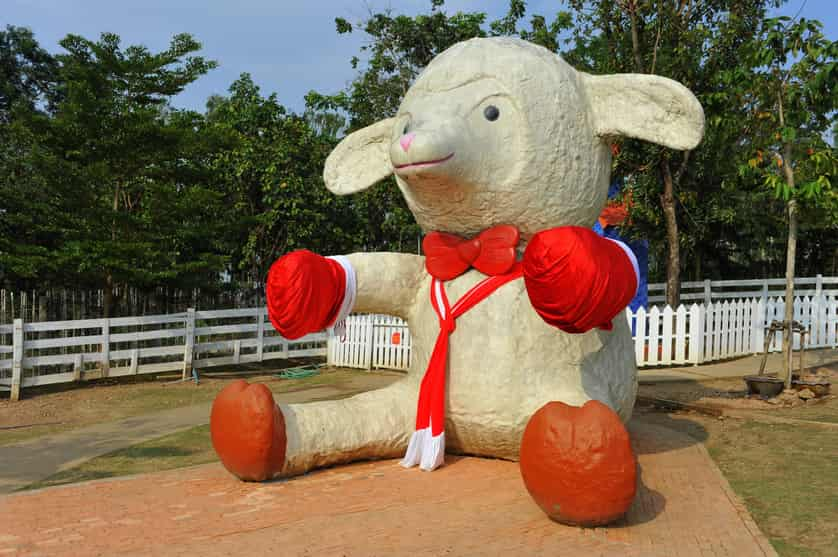
Hug You Sheep Farm – a haven for selfie-takers!
A great destination for kids and families! Sheep farms are great for selfies, those cutsie shots for your Facebook profile, and so on. There are real sheep around, naturally, but unlike the Swiss sheep farm near Hua Hin, the sheep are far from the main attraction.
Pick up a handful of grass for a nominal 20 baht and guarantee you’ll be surrounded by the sheep. The pen is plenty big, and you can let the sheep chase you if you want. Do have a camera ready, however – that handful of grass may be gone faster than you think. Alternatively, get your pictures with signs in several languages, a giant Facebook ‘like’ thumb, or a five-meter-tall sheep with open arms. Make this a part of any stop to Lampang, be it a daytrip or a weekend trip.
349 Moo 2, Tambon Wangprao, Koh Kha, Lampang 52130
(GPS: 18.129743,99.391161)
http://hugyou.tarad.com
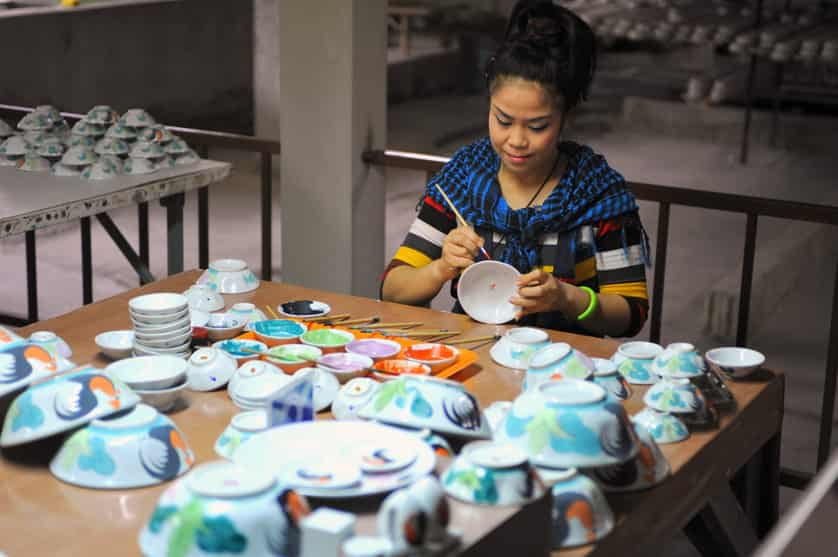
Dhanabadee Ceramic Museum – where the chicken bowls are made
Originally from the Canton region in China, a chicken bowl (koey oua) holds rice soup or noodles – take your pick. In the early 20th century, Chinese immigrants came to Thailand in larger numbers, and during the Sino-Japanese war the imported chicken bowls came in short supply. Chicken bowls started being produced in Lampang in 1937, and were fired using a Dragon Kiln. They’re not made this way any more, however, but it’s a great look into a Thai tradition that’s slowly fading away. The tour guide speaks English, and complements many of the signs which are only in Thai. Look for the world’s tiniest chicken bowl smaller than a grain of rice (and don’t ask me how they painted it!)
32 Watjongkham Road, Prabath, Muang Lampang, 52000
(GPS: 18.28054,99.512512)
dhanabadeeceramicmuseum.com
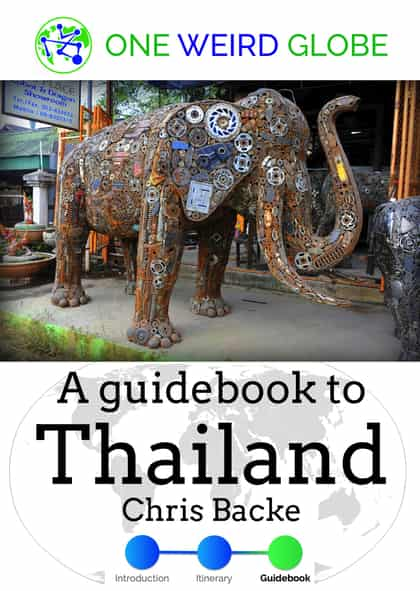
Wherever you travel in northern Thailand, get off the beaten path in your travels!
Chris Backe is the blogger behind One Weird Globe, a travel blog that focuses on the weird and offbeat destinations around the world. He’s lived in Asia since 2008, and is currently in northeast Thailand. He’s written over a dozen books and itineraries, and has recently completed a guidebook about offbeat Thailand in March 2015.








